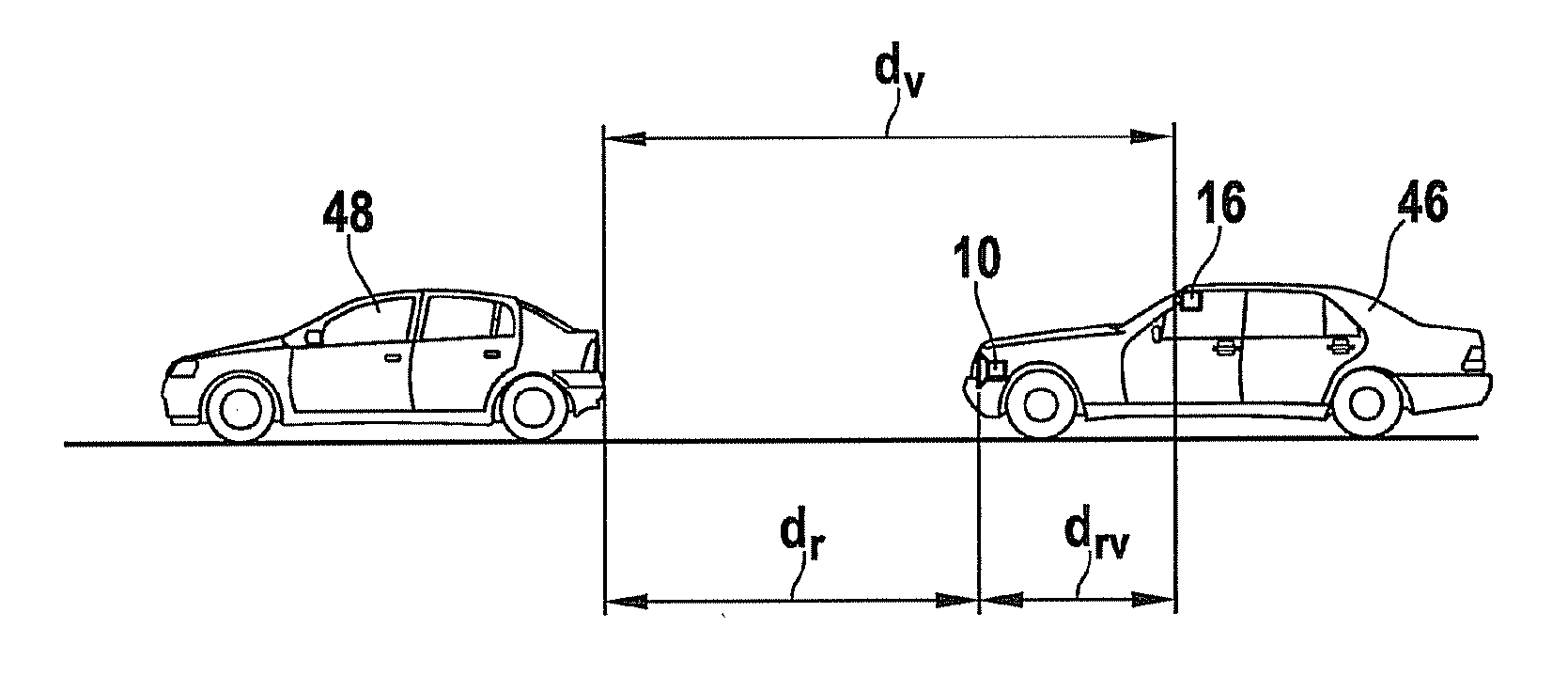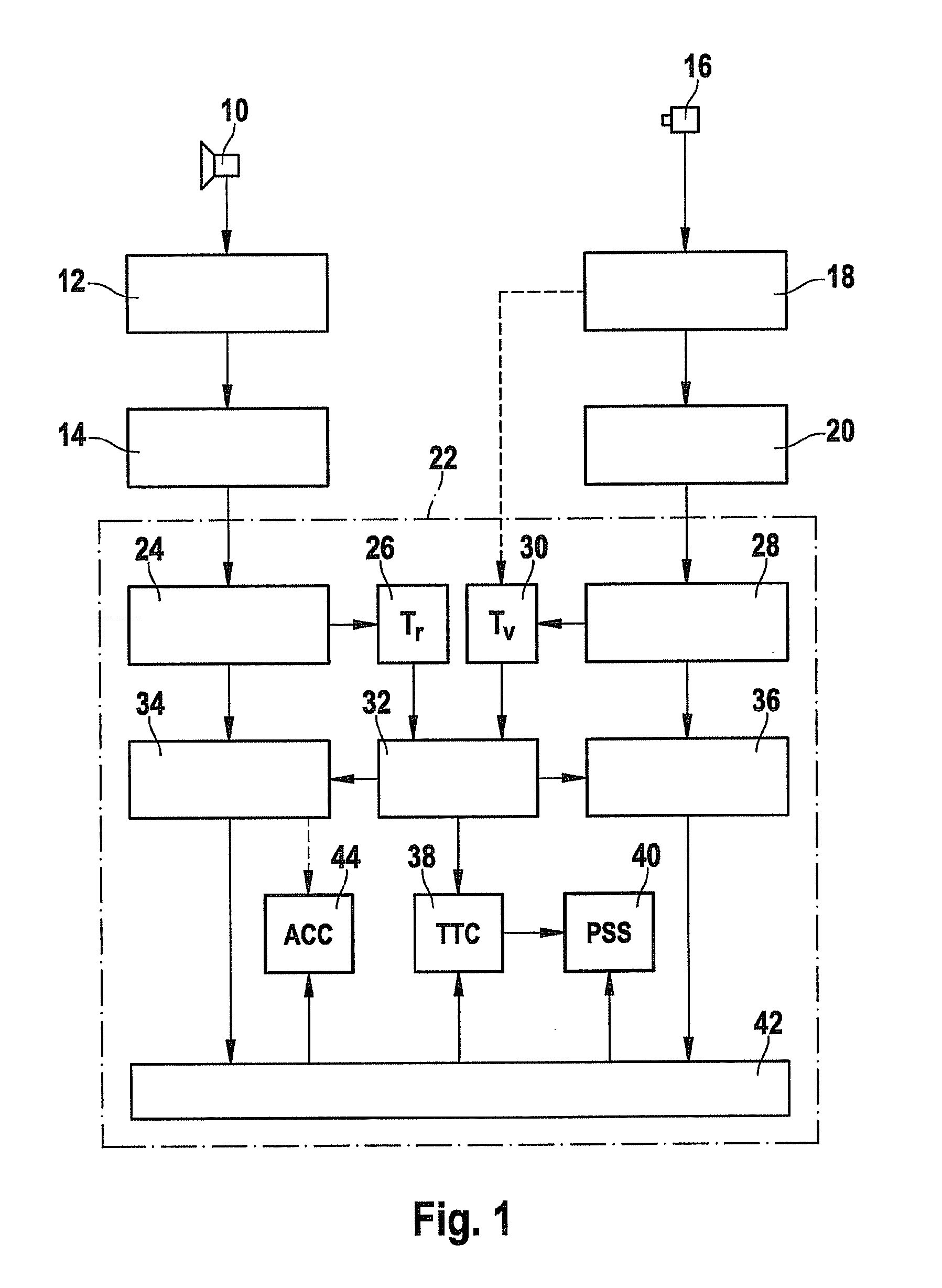Driver assistance system and method for checking the plausibility of objects
a technology of driver assistance and object plausibility, which is applied in the direction of analogue processes, instruments, and specific applications using reradiation, etc., can solve the problems of only providing inaccurate data, high accuracy and reliability requirements, and considerable sources of risk, so as to achieve reliable plausibility check
- Summary
- Abstract
- Description
- Claims
- Application Information
AI Technical Summary
Benefits of technology
Problems solved by technology
Method used
Image
Examples
Embodiment Construction
[0033]FIG. 1 shows a driver assistance system for a motor vehicle, namely in this example a combination of an adaptive cruise control (ACC) system and a predictive safety system (PSS), shown as a block diagram. This system includes two object position-finding systems that operate independently of one another for detection of the field in front of the vehicle equipped with the driver assistance system.
[0034]A first object position-finding system is formed by a radar sensor 10, an FMCW radar in the example shown here. Received radar signals are preprocessed in an analysis stage 12, thus yielding position data 14 for one or more located objects. Each object is described by a set of position data, including the distance, the relative speed and the azimuth angle of the object. The radar measurements are performed cyclically during a period on the order of 100 ms, so that position data 14 are updated in short intervals.
[0035]A monocular video system having a video camera 16, installed in ...
PUM
 Login to View More
Login to View More Abstract
Description
Claims
Application Information
 Login to View More
Login to View More - R&D
- Intellectual Property
- Life Sciences
- Materials
- Tech Scout
- Unparalleled Data Quality
- Higher Quality Content
- 60% Fewer Hallucinations
Browse by: Latest US Patents, China's latest patents, Technical Efficacy Thesaurus, Application Domain, Technology Topic, Popular Technical Reports.
© 2025 PatSnap. All rights reserved.Legal|Privacy policy|Modern Slavery Act Transparency Statement|Sitemap|About US| Contact US: help@patsnap.com



